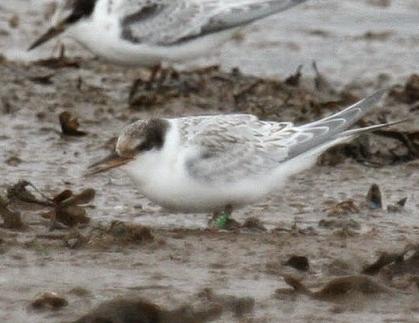So the terns have gone, for now, and we (the Wardens) are
mulling over the season. In fact we are almost re-living it, as we trawl
through the diaries and shift reports, plucking out events and crunching
numbers summer is coming back to life.
Our focus now is the end of season report. After 3 months on
the beach we are in an office, trying to make the adjustment to working at a
desk!
The report will soon be published, laying out in detail the
story of 2014, but in brief, it has been a good year for the colony. The Little
Terns faced significant challenges, notably Fox predation, but there were many
reasons to be positive.
We had 136 nesting pairs of Little Terns, producing 229
Nests, and ultimately 77 Fledglings. It's the best result at the colony since
2010 and this is due, in part, to the incredible volunteer support we received. An
amazing 643 volunteer hours were contributed. Many different people helped protect
this vulnerable seabird, and without their help, future generations may not have a vibrant and diverse coastline that little terns create.
 |
| Warden Alec Holton enjoying another sunny day at Gronant |
Reflecting back, there were certain personal highlights for
the wardens. The long shifts can be very tiring, but the rewards are great and
often revealed at time when everyone else is asleep. For me, spotting the first
3 Fledglings on a sunny Sunday in June was a special moment. My fellow warden,
Alec Holton, particularly enjoyed watching the nest he had taken so much care
in gradually moving inside the electric fencing, hatch out in safety. Perhaps
those chicks will be back in two or three years’ time, with chicks of their
own. Andrea was astonished to witness the parental commitment and consistency of a pair rearing their two chicks at the end of the season, when all others had left; 2 feeds for one chicks, then two feeds for the other, over and over again every 20 minutes whilst also patrolling the skies and herding their young around the beach.
 |
| Myself, Tom Hiles, getting a fledgling count at the end of July |
2014 marks a decade of Denbighshire Countryside Service managing
the colony, and 2015 will be the 40th year that the colony has been
protected. We have been looking back at some of the previous years’ reports and
it is striking how much time and effort has been invested in protecting the
colony from so many different people. There have been seasons good and bad, but
since 1975 the number of pairs nesting at Gronant has slowly risen from just 15
to 136. We hope that once again next year there will be a collective effort to
protect this last remaining Little Tern colony in Wales.






